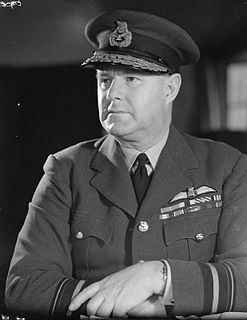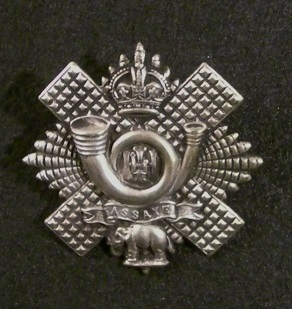Air Chief Marshal Sir William Gore Sutherland Mitchell, was a senior commander in the Royal Air Force (RAF) and the first RAF officer to hold the post of Black Rod.

Air Chief Marshal Sir Roderic Maxwell Hill, was a senior Royal Air Force commander during the Second World War. He was a former Rector of Imperial College and Vice-Chancellor of London University. The Department of Aeronautics of Imperial College is situated in a building named after him.

Air Chief Marshal Sir Hugh William Lumsden Saunders, was a South African aviator who rose through the ranks to become a senior Royal Air Force commander.
Air Vice Marshal Sidney Osborne Bufton, was a senior commander in the Royal Air Force during the middle part of the 20th century. He played a major part in establishing the Pathfinder project, over the objections of Arthur Harris.
Air Marshal Sir Hugh Sidney Porter Walmsley, was a senior commander in the Royal Air Force during and after the Second World War. He was the final commander of the unified Royal Indian Air Force before its division upon India's independence and partition.

Air Chief Marshal Sir Alfred Earle, was a senior officer in the Royal Air Force during the Second World War who later served as Vice-Chief of the Defence Staff (1964–66), and Director General of British Defence Intelligence (1966-1968).
Air Chief Marshal Sir George Clark Pirie, was a senior commander in the Royal Air Force during the Second World War and the immediate post-war years. During the First World War, Pirie served as an infantry officer before transferring to the Royal Flying Corps where he took up duties as an observer officer.

Air Chief Marshal Sir Francis Joseph Fogarty, was a senior commander in the Royal Air Force (RAF) during the Second World War and also in the post-war years. During the First World War he served as a pilot in the Royal Flying Corps. He was transferred to the RAF on its creation in 1918 and remained in the service during the inter-war years.
Air Marshal Sir Cyril Bertram Cooke, was a senior Royal Air Force officer who served as Air Officer Commanding-in-Chief RAF Maintenance Command from 1947 to 1949.
Air Vice Marshal Robert Stewart Blucke, was a Royal Air Force officer who became Air Officer Commanding-in-Chief at RAF Transport Command in 1952.
Air Marshal Sir Anthony Dunkerton "Mark" Selway, was a Royal Air Force officer who became Air Officer Commanding-in-Chief at Coastal Command from 1962 until his retirement in 1965.
Air Marshal Sir Paul Davie Holder, was a Royal Air Force officer who became Air Officer Commanding-in-Chief at RAF Coastal Command.

Air Marshal Sir Philip Babington, was a Royal Air Force officer who served as Air Officer Commanding-in-Chief of Flying Training Command from 1942 to 1945 during the Second World War. He was the younger brother of John Tremayne Babington.
Air Marshal Sir Patrick Hunter Dunn, was a Royal Air Force officer who served as Air Officer Commanding-in-Chief of Flying Training Command from 1964 to 1966.
Air Vice Marshal Cuthbert Trelawder MacLean, was a Royal Air Force officer who served as Air Officer Commanding-in-Chief at Middle East Command from 1934 to 1938.
Air Vice Marshal Sir Hazelton Robson Nicholl, was a Royal Air Force officer who served as Air Officer Commanding-in-Chief RAF Middle East from 1938 to 1939.

Air Vice Marshal Wilfred Ashton McClaughry,, born Wilfred Ashton McCloughry, was an Australian aviator and air commander who served in the Australian Flying Corps during the First World War and Royal Air Force in the Second World War. His senior commands included: British Forces Aden (1930s), and; No. 9 Group RAF, and Air Officer Commanding Air Officer Commanding Allied Headquarters Egypt. McClaughry was killed, while a passenger, in a flying accident in Cairo in 1943.
Air Vice-Marshal Robert Peel Willock, was a senior Royal Air Force officer who commanded the British Air Forces in Iraq during the Second World War.
Air Chief Marshal Sir Walter Hugh Merton, was a senior Royal Air Force (RAF) commander during the Second World War. After the war he held several senior RAF appointments before his retirement in 1963.
Air Vice Marshal Alan David "Peter" Gillmore, was a Royal Air Force officer who served as Commandant of the RAF Staff College, Bracknell.












